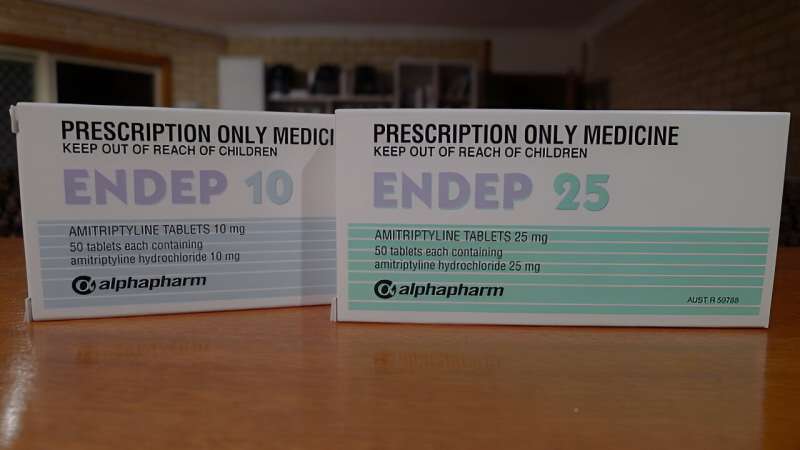This article has been reviewed according to Science X's editorial process and policies. Editors have highlighted the following attributes while ensuring the content's credibility:
fact-checked
trusted source
proofread
Microcrystalline cellulose soaks up amitriptyline to treat overdose

Research in the International Journal of Nano and Biomaterials has demonstrated how microcrystalline cellulose (MCC) can be used to soak up the drug amitriptyline in cases of overdose. Amitriptyline is a commonly prescribed tricyclic antidepressant, used to manage depression, chronic pain, and mood disorders. It is, as with many prescription medicines, also a drug of abuse as well as representing a potential lethal risk to users through overdose.
Amitriptyline can have various detrimental effects if misused. It can affect breathing cause nausea vomiting and diarrhea. It also affects the central nervous system leading to confusion, agitation, hallucinations, delirium, drowsiness, and potentially coma at higher doses. It has serious effects on the heart and cardiovascular system causing arrhythmia, hypotension (a dangerous drop in blood pressure), and even cardiac arrest.
Soma Chakraborty, Adrienne Nicole S. Bartolome, and Francisgerard A. Aguilar in the Department of Chemistry at Ateneo de Manila University in Quezon City, Philippines, explain that sequestration, the process of capturing and removing a substance from a solution, could be used to manage amitriptyline overdose. The team has investigated the effectiveness of MCC in sequestering, or adsorbing, amitriptyline from aqueous solutions.
The results are promising showing that MCC has a 74% adsorption rate over just two hours. The researchers also found that at higher concentrations of amitriptyline, sequestration by MCC was even more effective. Their experiments with MCC modified with a well-known pharmaceutical additive seaweed extract beta-carrageenan, a natural polysaccharide, as well as nanocrystalline cellulose (NCC) also showed how adsorption of amitriptyline could be enhanced when compared with unmodified MCC.
The findings hold much promise for treating accidental or even deliberate amitriptyline overdose. Prompt emergency action would see the MMC or an optimized modified version used to mop up amitriptyline in the stomach or gastrointestinal tract.
More information: Soma Chakraborty et al, Amitriptyline sequestration by unmodified and modified microcrystalline cellulose: a potential treatment for drug overdosing, International Journal of Nano and Biomaterials (2023). DOI: 10.1504/IJNBM.2023.132508
Provided by Inderscience




















